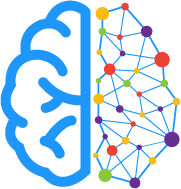Traumatic Brain Injury (TBI)
|
What is it? |
||
|
Disruption in brain functioning due to external trauma to head, scalp, skull, or direct damage to brain tissue. |
||
|
Classification |
||
|
- Primary: Injury at the time of impact (e.g., car accident, gunshot wound) |
||
|
Types of Damage |
||
|
Open (Penetrating): Object pierces skull and enters brain tissue, higher risk of infection |
||
|
Types of Closed TBI |
- Concussion: Rapid back & forth movement of brain |
|
|
Types of Hematomas |
- Epidural: Bleeding between skull & dura mater (rapidly expanding due to arterial bleeding) |
|
|
Symptoms |
||
|
Mild: Surface wounds, headache, dizziness (CSF leakage from ears or nose may indicate skull fracture) (warning for brain herniation) |
||
|
Diagnostics |
||
|
- CT Scan: Assesses for hematomas |
||
|
Treatment |
||
|
Mild Injury: Supportive care (rest, OTC analgesics, monitor closely for worsening) |
||
|
Nursing Interventions |
||
|
Priority: Maintain airway & ICP CLOSE MONITORING · Vital signs · ICP & neuro status · Respiratory Status FREQUENT NEURO CHECKS (LOC, Pupil Assessment and GCS) |
PREVENT INCREASED ICP · HOB ≥30 degrees · Avoid valsalva maneuver (straining) · Decreased stimuli · Avoid frequent suctioning |
|
No insights found
|
What is it? |
||
|
Disruption in brain functioning due to external trauma to head, scalp, skull, or direct damage to brain tissue. |
||
|
Classification |
||
|
- Primary: Injury at the time of impact (e.g., car accident, gunshot wound) |
||
|
Types of Damage |
||
|
Open (Penetrating): Object pierces skull and enters brain tissue, higher risk of infection |
||
|
Types of Closed TBI |
- Concussion: Rapid back & forth movement of brain |
|
|
Types of Hematomas |
- Epidural: Bleeding between skull & dura mater (rapidly expanding due to arterial bleeding) |
|
|
Symptoms |
||
|
Mild: Surface wounds, headache, dizziness (CSF leakage from ears or nose may indicate skull fracture) (warning for brain herniation) |
||
|
Diagnostics |
||
|
- CT Scan: Assesses for hematomas |
||
|
Treatment |
||
|
Mild Injury: Supportive care (rest, OTC analgesics, monitor closely for worsening) |
||
|
Nursing Interventions |
||
|
Priority: Maintain airway & ICP CLOSE MONITORING · Vital signs · ICP & neuro status · Respiratory Status FREQUENT NEURO CHECKS (LOC, Pupil Assessment and GCS) |
PREVENT INCREASED ICP · HOB ≥30 degrees · Avoid valsalva maneuver (straining) · Decreased stimuli · Avoid frequent suctioning |
|
No insights found




































